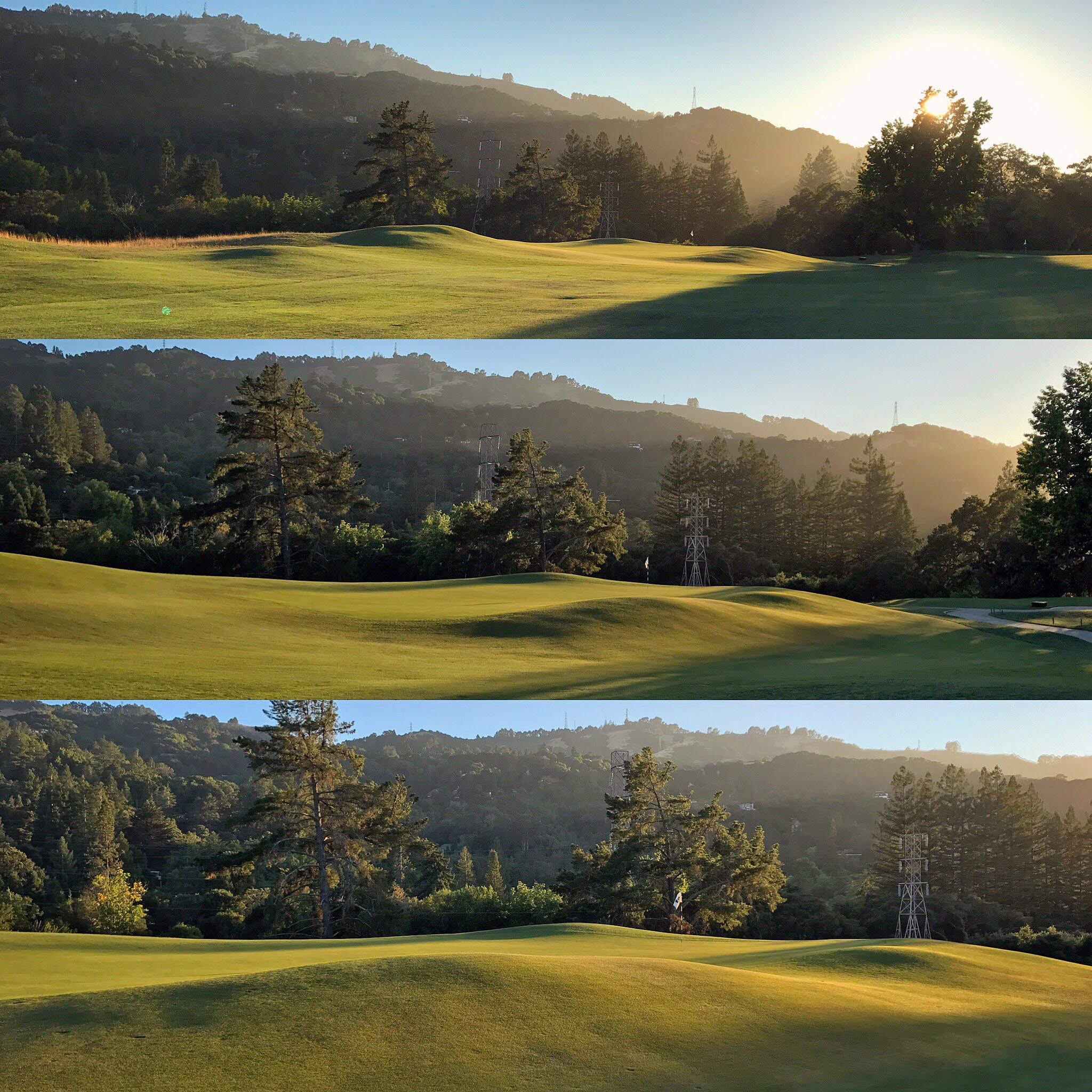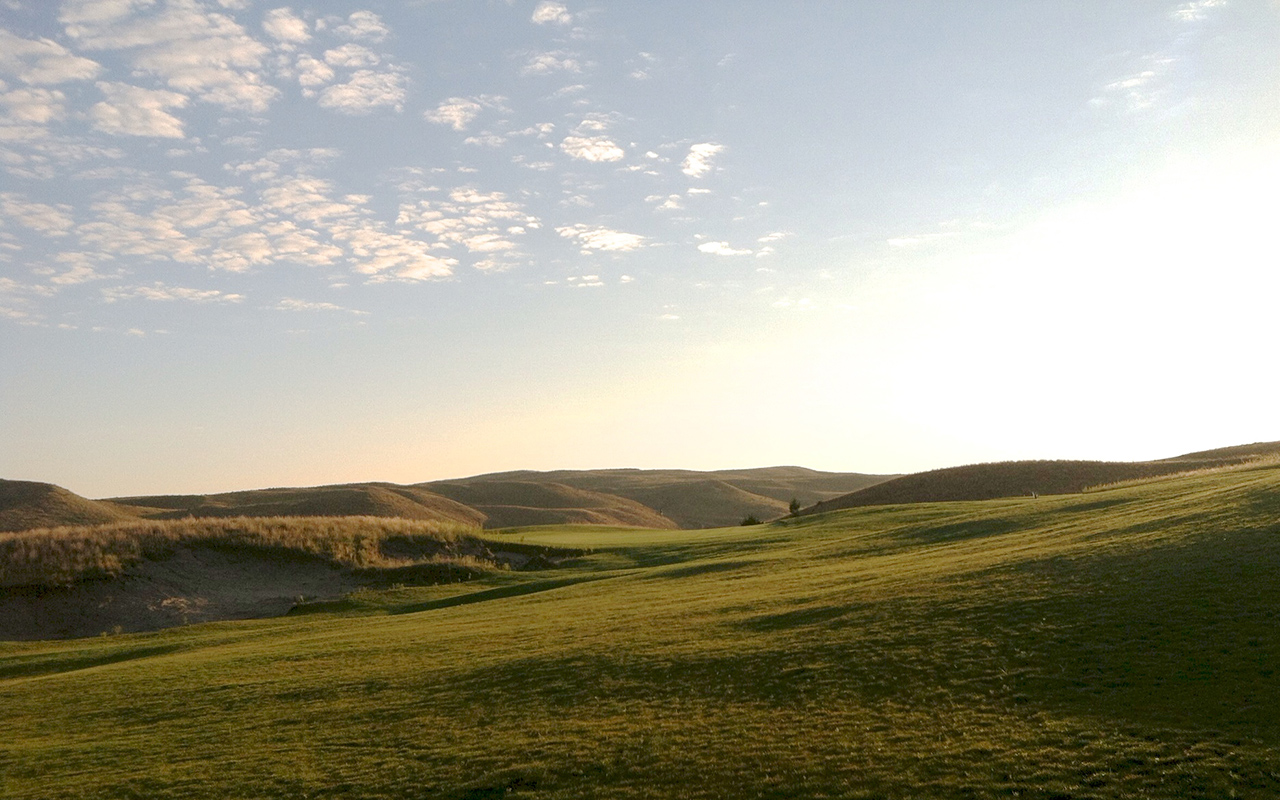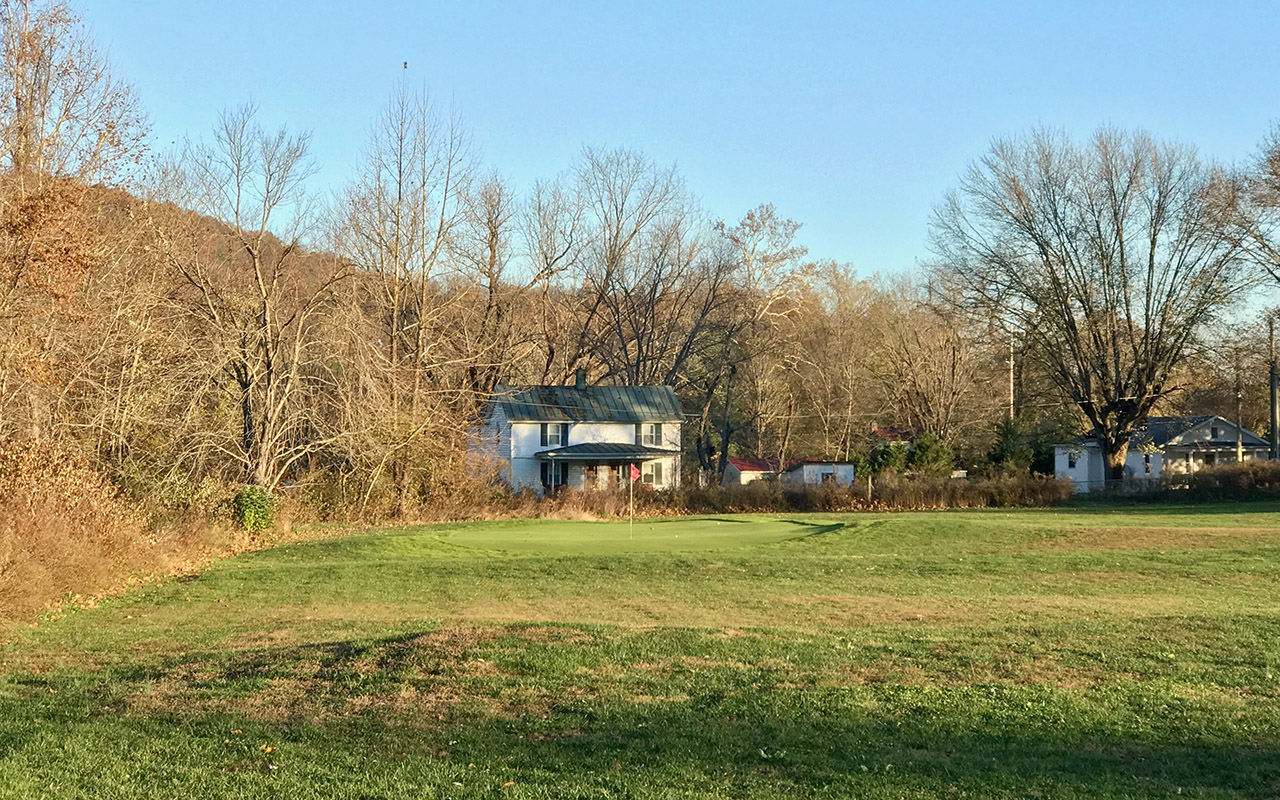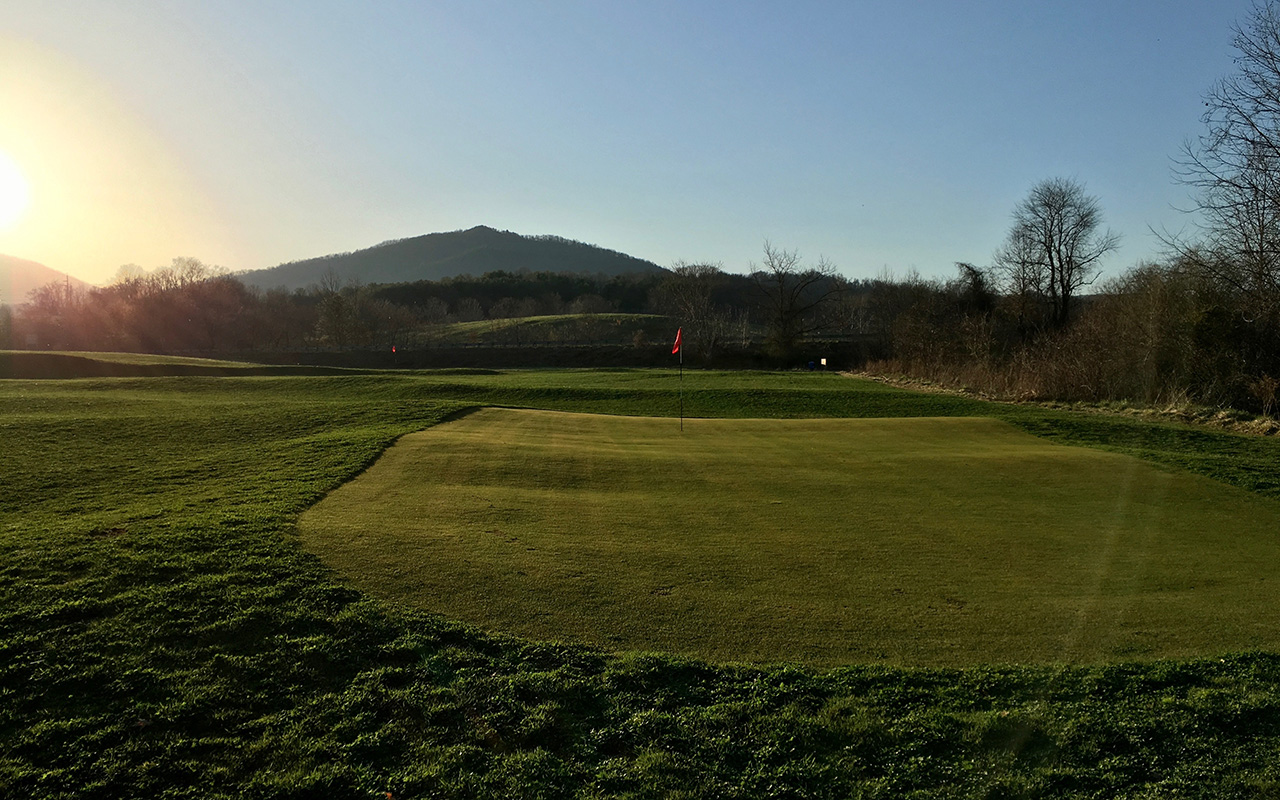There’s a simple trick I have fallen in love with in golf course design. I like to call it the “up-and-over.” Essentially, it’s a mound or ridge along the side of a green. This contour, which should be covered in tightly mown grass, helps feed the ball toward the hole—if your shot is on line. If it is not, the up-and-over will deflect your ball farther away. This is a true “help or hurt” feature, differentiating great shots from merely good ones.
Misses result in recovery shots laden with options. From the wrong side, you can bump a low-lofted club along the ground, use a putter, or do today’s common thing and try to flop a lob wedge right to the pin.
But unless you are an elite golfer cashing tournament checks every week, I would recommend one of the two former options. Not only will your misses have less severe consequences, you will also be more likely to enjoy the shot. As the ball tumbles along the ground, you are constantly engaged, wondering if it will take a turn for the better or worse, or if it will have the right amount of speed to release gently over the hump and toward the hole.

Views of the 12th green at Orinda Country Club. Photo credit: Brett Hochstein
I have helped build up-and-overs a few times, most notably on the 12th hole at Orinda Country Club as part of a renovation headed by Todd Eckenrode. The 12th was one of the few greens we redid from scratch. In fact, it was maybe the most substantial of our “blowups” because we shortened the hole by approximately 25 yards and converted it from a short par 5 into a longish par 4. (The practical goal was to separate the hole from No. 3, a long par 3 where many players hit woods, often hooking them into the approach area of the 12th fairway.)
As we shoved the dirt of the green pad back down No. 12, we also sought to make the green visible from at least the right half of the fairway. This angle, along with a putting surface that tilted toward the back right, would provide a strategic incentive to play the tee shot away from the line of instinct down the left and favor the high right side of the fairway.
Knowing that most would be playing long second shots into the green, we started thinking about running approaches and their potential outcomes. We needed a way to corral the ball onto the green from the right, especially as we were anchoring the green to a big downslope front left. At the same time, we wanted to challenge the overly safe bailout to the right, as players would surely try to avoid the left miss and the drop-off to a hillside of native grasses.
To create both of these effects at once, we built a pair of long mounds. This up-and-over feature helps on-line approaches and hurts off-line ones, with the result leaving a tricky but fun recovery shot from the right. To allow surface water to drain out, we cut a trough between the hummocks. This had the happy side effect of introducing a greater variety of shots within and around the green. Originally, we planned to have bunkers somewhere on the hole, but given the interest created by the ground contours, we decided they were unnecessary.
Other examples of the up-and-over tactic in projects I’ve worked on include the 10th at Dismal River (Red) shaped by Eric Iverson, the 6th at Mike McCartin’s Schoolhouse Nine (where I had my lightbulb moment with the idea), and the new 6th green at Diablo Country Club, another East Bay renovation by Todd Eckenrode.
-

The 10th hole on Renaissance Golf Design's Red Course at Dismal River Club. Photo credit: Brett Hochstein
-

The 6th hole on Schoolhouse Nine, Mike McCartin's innovative short course in Sperryville, Virginia. Photo credit: Mike McCartin
-

No. 6 at Schoolhouse Nine from the back. The subtle up-and-over bedevils the overly cautious shot aimed away from the creek. Photo credit: Mike McCartin
Like all ideas in golf design, both good and bad, the up-and-over is best used sparingly in order to avoid the staleness of repetition. But on longer approaches with room to spare on each side of the green, it’s not a bad one to have in your back pocket. And the best part is, it doesn’t take a spectacular piece of land or a massive amount of earthmoving to create.
Brett Hochstein is a California-based architect and shaper who has worked for Renaissance Golf Design, Origins Golf Design, Infinite Variety Golf Design, and the Arnold Palmer Design Company. You can find more of his writing on his website.


 by
by 
